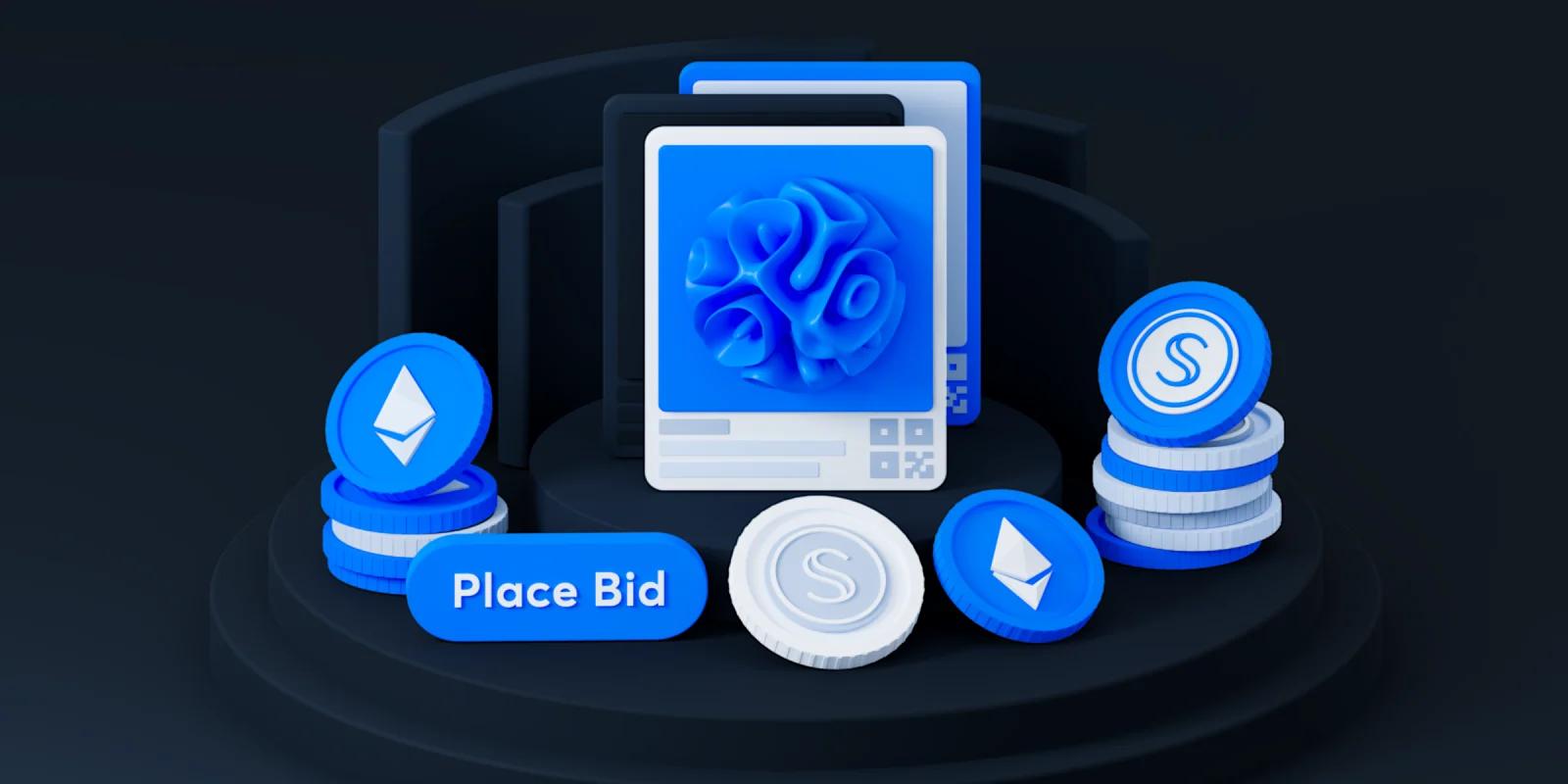What is Secret Network?
Secret Network is a layer one (L1) smart contract development platform that incorporates advanced security features into their smart contract design and allows users to scale privacy features to NFTs.
Privacy is one of the most contentious and powerful aspects of blockchain technology. Secret Network has all the features to capitalize on private blockchain innovations. The recent mainstream adoption of NFTs has pushed them to create a network and use cases that ensure its longevity as a blockchain in a world that is rapidly proving itself to be a multichain world.
How does Secret Network work?
The Secret Network is a decentralized network of secret nodes that use Trusted Runtime Environments (TEEs) to provide secure and private computing of encrypted data.
TEEs, which are used in devices such as smartphones, function as a "black box" for data processing. Secret created “viewing keys” for users to maintain control over their data.
Secret’s smart contracts are built using the Rust programming language that allows applications to encrypt data without creating areas of exposure for data breaches.
Data breaches often occur from errors in code. Rust optimizes user error minimization while compacting the amount of code needed to write.
What are private NFTs?
Private NFTs, or Secret NFTs, are non-fungible tokens on the Secret Network blockchain that have programmable privacy features including:
- Private metadata - Information about blockchain transactions and the digital asset being used
- Private ownership - Information about the sender and recipient wallet address
- Access control - Who can access the NFT including music NFTs, art NFTs, and more
Secret developed a new vision for privacy-preserving tokens based on Ethreum’s ERC-721 token standard called SNIP-721. It has programmable privacy features enabled by default.
How do private NFTs work?
Secret Network's SNIP-721 standard is based on the ERC-721 model. Similar to the SNIP-20 tokens, SNIP-721 has privacy features as the default setting.
Private NFTs enable users to control the viewership of the digital asset. Ethereum, which is the main chain for the NFT marketplace, does not allow users to control who can view their wallets.
Given the nature of NFTs and the PFP trend, identifying someone based on their NFT collection raises security risks because it is easy.
NFTs on the Secret Network allow you to choose who can see into your wallet and NFT collection. It's a simple concept that is revolutionary to the digital art space.
What is the difference between public chain NFTs and private NFTs?
While private NFTs and public chain NFTs are both non-fungible tokens that can represent everything from music to photos, public blockchains have public metadata, public ownership, and no access control; all three are solved by private NFTs.
Ethereum, the most popular blockchain used for NFTs, and Solana, a 3rd generation blockchain with low fees and fast transaction times, lack privacy features. The lack of privacy features limits mainstream uses cases that function better as private NFTs such as IDs, property, ticketing, and exclusive content.
Why are Secret NFTs important?
Secret NFTs support public and private metadata, allowing you to make private ownership and metadata public for everyone to see.
Programmable privacy is a matter of choice.
Secret NFTs also have an optional private metadata field that opens up use cases from NFT art with hidden links to high-quality images, hidden items, and other unique features that the creator economy has yet to explore.
Permitting private ownership ensures that assets and transactions are not open to everyone. An artist can make a thumbnail or watermark version of an image available, but the original version is private and must be purchased to view.
This is equivalent to the current Web 2.0 model and creates the rails for implementing this practical and necessary piece to the puzzle in scaling the NFT space.
Why are private NFTs important for brands?
Private NFTs are important because they give brands and users the option to share or hide their NFT on the blockchain.
Unlike public Layer 1 blockchains like Ethereum and Solana, Secret Network protects users from having their transaction and account information traceable through block explorers like Etherscan, Solscan, and public blockchain analytics tools like Nansen AI.
This is a huge step in protecting digital rights.
Private NFTs Increase the Value of Digital Assets
One argument against NFTs is that anyone can save a JPEG image on a computer and minimize the value of the NFT. Brands launching private NFTs on Secret Network can protect the value of their digital assets and privacy of their user’s data with native security tools.
Secret Network’s private NFT technology creates an ecosystem that fosters innovation throughout the creator economy and how we view and value ownership of digital assets.
Benefits of Private NFTs for Brands
For brands looking to add NFTs to their marketing strategy, there are twelve benefits Secret predicts.
- Mintable
- Burnable
- Ownable
- Transferable
- Non-transferable
- Lockable
- Mutable
- Immutable
- Re-fungible
- Divisible
- Composable
- Conditional
Some of these characteristics overlap with NFTs on other networks. The most important benefits are NFTs being lockable and conditional. Users can lock the privacy and base it off specific conditions and parameters they set.
Drawbacks of Private NFTs for Brands
One main issue is the management of privacy control that is needed. If an organization was to launch an NFT project, one massive security flaw is allowing anyone to view or interact with this public address.
An extremely relevant problem for brands and users is receiving an NFT with malicious intent behind it. Users can send digital pieces that steal NFTs or funds from your wallet.
For brands worth millions and billions of dollars, these security breaches should be preventable.
Privacy control management is the main drawback of private NFTs for brands. Mismanaging the privacy of an asset creates problems for owners and can be detrimental to brands.
Quentin Tarantino's Private NFT Collection
The award-winning director and screenwriter Quentin Tarantino is selling seven uncut scenes from Pulp Fiction as fungible tokens, including original handwritten scripts and exclusive audio commentary.
Tarantino chose to use the Secret Network for his art to maintain privacy from the public.
There's always a level of traceability with each transaction on public blockchains, and for someone of Tarantino’s status, private NFTs enable him to participate in the new creator economy while minimizing risk and creating value for buyers.
Without Secret Network, NFT buyers would own the rights to Tarantino’s work but wouldn’t necessarily keep the viewership of the uncut scenes private. While the artwork still maintains a value, the value creation is increased by only allowing owners of the NFT the right to watch and share the video NFTs with the audience they choose.
How to Get Started on Secret Network NFTs
Stashh is Secret Network's NFT platform that is set to launch in November of 2021.
Before starting, it’s important to define what your goals are with utilizing NFTs and coming up with a unique use case that isn’t just a profile picture.
As mentioned before, we have entered the building phase of NFTs. Art was the catalyst, and now the foundation has been set for the real innovation that could impact every industry.
Take real estate for example.
Some platforms are already attempting to tokenize real estate ownership. There is information that owners wouldn’t want the public to view regarding the ownership of their homes. In theory, the Secret Network could solve this underlying problem.
Several use cases are arising with NFTs. For brands, two use cases that stand out are membership and rewards-based NFTS.
Membership NFTs represent a digital ticket into an organization. If a user wanted to create a group of 10,000 people, they could utilize NFTs as a representation of that group.
The user then needs to define the value of this group.
How are you going to incentivize people to hold these NFTs and provide value to them?
For example, if you were a sports organization, you could give members special access to behind-the-scenes footage utilizing Secret NFTs that only they could view.
Once you have defined your goals, you need to decide how you are going to market and spread the word about your project.
Discord and Twitter are the perfect platforms to spread project awareness.
Discord acts as your home office. It's where people go to find information about a project and interact with its community.
Many Discord channels grow and capitalize on network effects by running invite contests to incentivize users to share the Discord channel with their immediate networks.
Twitter is where a majority of the NFT audience gets their information. Being on Twitter is a crucial aspect of spreading the word for your NFT project.
While the Secret Network is still in its beta for NFTs on the platform, the public launch happening in November will ignite the growth of the NFT ecosystem.
Final Thoughts
Secret Network and its accompanying privacy features bring a game-changing element to the NFT and blockchain market.
Many chains have tried to solve the privacy issue, yet no one has succeeded. Secret Network is positioning itself in a way where it could ride the NFT hype trend and exponentially grow the usage of their network in the process.
There are plenty of highly developed L1s, but if there is no economic growth or reason for users to utilize them, the chain will ultimately fail.
Combining the massive growth of NFTs, a strong use case, and a developer-friendly chain, Secret Network is the perfect place for users and businesses to launch future NFT marketing campaigns.




